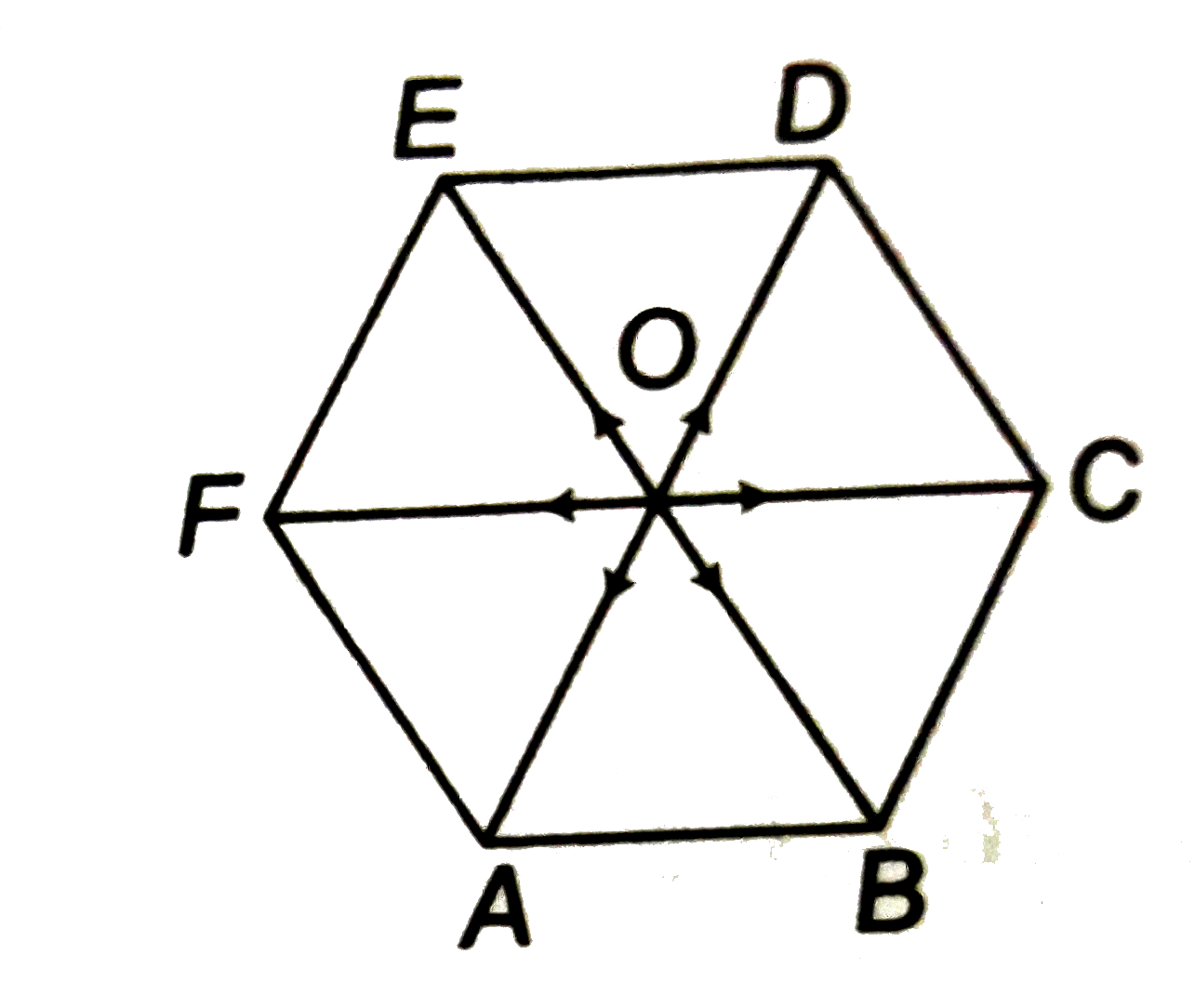In a regular hexagon ABCDEF, A→B=a, B→C=→b and →CD=⋅Then →AE= →a+→b+→c b. 2→a+→b+→c c. →b+→c d. →a+2→b+2→c
2b−a
b−a
2a−b
a+b
The correct Answer is:A
As in figure, AB=a,BC=b,
So, AD=2bandED=a

Now, AE+ED=AD
⇒AE=AD−ED=2b−a
Topper's Solved these Questions
- VECTOR ALGEBRABOOK - ARIHANT MATHS ENGLISHCHAPTER - VECTOR ALGEBRAEXERCISE - Exercise For Session 1
7 Videos
- VECTOR ALGEBRABOOK - ARIHANT MATHS ENGLISHCHAPTER - VECTOR ALGEBRAEXERCISE - Exercise For Session 2
17 Videos
- TRIGONOMETRIC FUNCTIONS AND IDENTITIESBOOK - ARIHANT MATHS ENGLISHCHAPTER - TRIGONOMETRIC FUNCTIONS AND IDENTITIESEXERCISE - Exercise (Questions Asked In Previous 13 Years Exam)
19 Videos
Similar Questions
In a regular hexagon ABCDEF, A→B=a, B→C=→b and →CD=c Then\ →AE=
a.→a+→b+→c b. 2→a+→b+→c c. →b+→c d. →a+2→b+2→c
View SolutionProve that [→a,→b,→c+→d]=[→a,→b,→c]+[→a,→b,→d]
View Solution(→a+2→b−→c).(→a−→b)×(→a−→b−→c) is equal to [→a →b →c] b. c. 2[→a →b →c] d. 3[→a →b →c]
View Solution(→a+→b).→b+→c×(→a+→b+→c)= [→a →b →c] b. \ 0\ c. 2[→a →b →c] d. −[→a →b →c]
View SolutionIf →a,→b,→cand→d are distinct vectors such that →a×→c=→b×→dand→a×→b=→c×→d, prove that (→a−→d).(→b−→c)≠0,
View SolutionABCDE is pentagon, prove that →AB + →BC + →CD + →DE+→EA = →0 →AB+→AE+→BC+→DC+→ED+→AC=3→AC
View SolutionABCDE is pentagon, prove that →AB + →BC + →CD + →DE+→EA = →0 →AB+→AE+→BC+→DC+→ED+→AC=3→AC
View SolutionIf →a.→b=→a.→c and →a×→b=→a×→c, →a≠0, then
View SolutionProve that [→a+→b→b+→c→c+→a]=2[→a→b→c].
View Solution[(→a×→b)×(→b×→c)(→b×→c)×(→c×→a)(→c×→a)×(→a×→b)] is equal to (where →a,→band→c are nonzero non-coplanar vector) [→a→b→c]2 b. [→a→b→c]3 c. [→a→b→c]4 d. [→a→b→c]
View Solution
